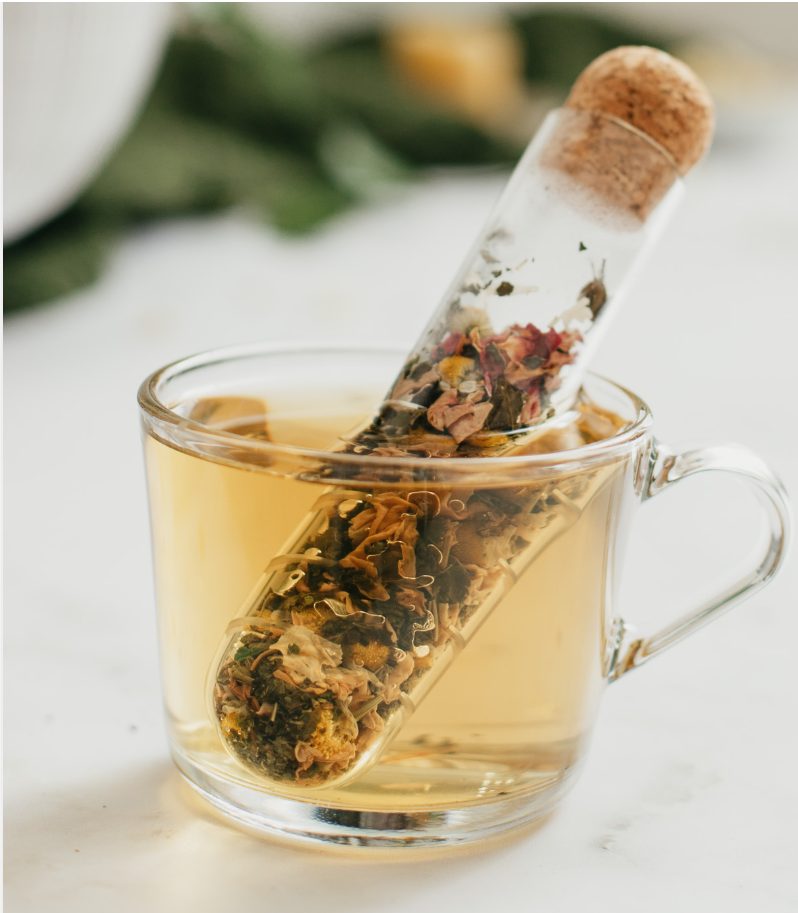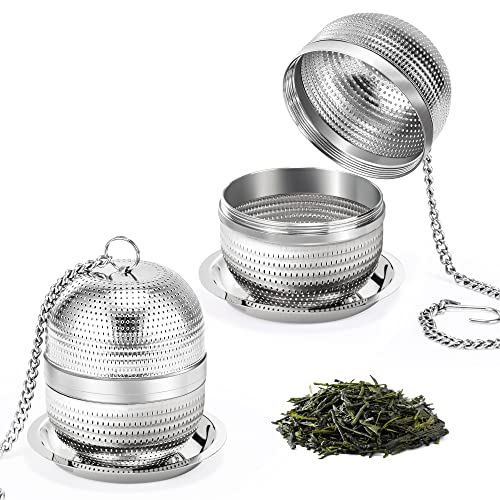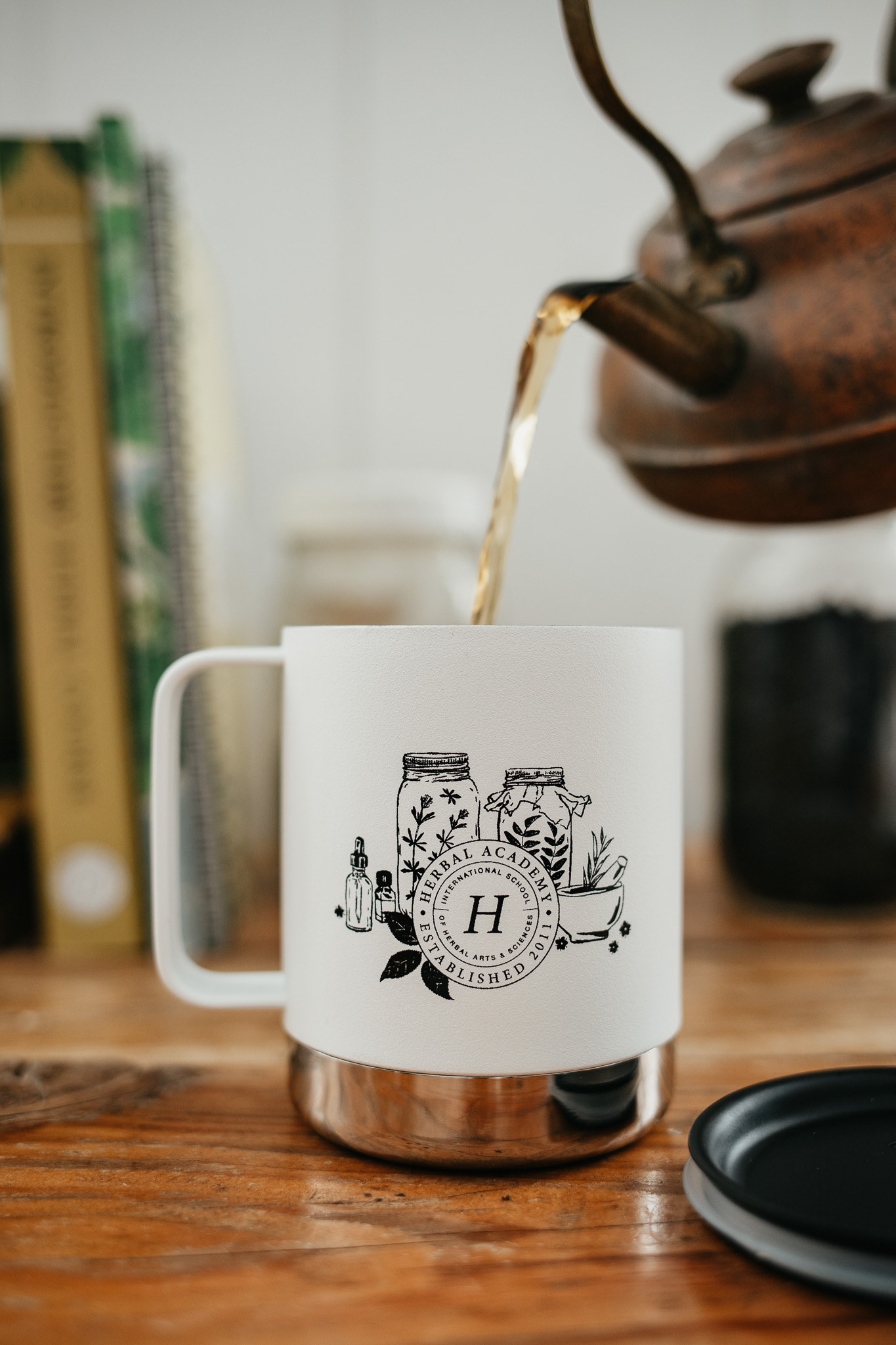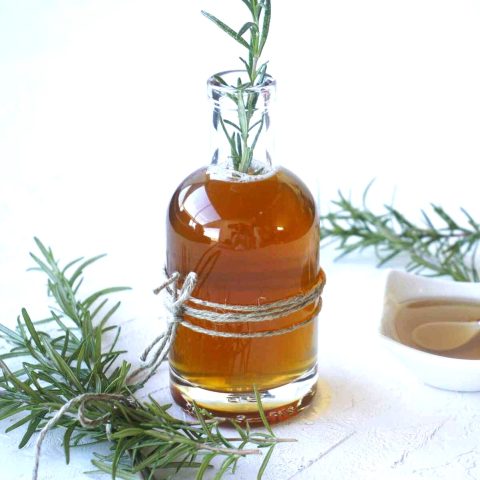Learn three ways to make lemon balm tea using fresh or dried leaves, including an iced version. This calming herbal tea recipe has many health benefits.
Herbal tea made of lemon balm
Herbal tea made of lemon balm is an infusion prepared using the leaves of the lemon balm plant (Melissa officinalis), a fragrant herb from the mint family.
Homemade lemon balm tea has been used for centuries to soothe, calm, and encourage relaxation. Adding banana peel to the tea can further enhance its sleep-promoting properties.
It is also beneficial to combine lemon balm with other “sleeping herbs” such as chamomile, lavender, oatstraw, valerian, or catnip. Experiment with different herbs to find your favorite. The combination of lavender and lemon balm makes calming and soothing tea that eases digestion.

What is lemon balm herb?
Known as Melissa officinalis, the lemon balm is easy to grow perennial herb. It was planted in ancient times around beehives to encourage bees to be happy and stay together.
Its Latin name Melissa means “honey bee.”
Leaf of lemon balm is easy to recognize. When you crush it between your fingers, lemon balm has an unmistakably lovely lemon flavor.
Stems are squared like all herbs from the mint family. When you twirl them around in your fingers, you will feel it.
Leaves are oppositely paired, deeply wrinkled, and range from dark green to yellowish green.
Like all members of the mint family, lemon balm is not toxic and thus safe to forage. Visually you may mistake it for other members of the mint family. However, its wonderful lemony aroma, when you crush and smell the leaves, should confirm it as lemon balm.
How does lemon balm tea taste?
Lemon balm, a member of the mint family, has a refreshing, lemony flavor with subtle hints of mint. Its citrusy notes can be enhanced with raw honey or other natural sweeteners, such as maple syrup.
Tea made from fresh lemon balm leaves has a more intense and vibrant lemon flavor than tea made from dried leaves, though both are enjoyable.
When paired with other calming herbs like lavender, lemon balm’s citrusy flavor is beautifully complemented, creating a soothing and aromatic blend.

Foraging or growing lemon balm?
As much as I enjoy foraging wild herbs such as yarrow or elderberries to brew wild teas, I had no luck finding lemonbalm in nature. However, lemon balm grows worldwide, sometimes reaching heights of two feet if left unattended. So I encourage you to search in your location. The best time to forage is from May to September. One can find them in hedgerows, wood edges, or waste grounds.
When I planted a tiny lemon balm, it quickly took over a large portion of my garden. No wonder I made this calming lemon balm tincture and mosquito repellent I always carry with me for any holiday trip. Lemon balm lip balm is a go-to solution in the prevention or against the first signs of cold sores.
While I love to make fresh lemon balm tea , I also enjoy lemon balm in salads, pesto or to flavor ice pops or lemonades. Here are more than 20 lemon balm recipes and ways to use lemon balm in the kitchen or apothecary.
How to Harvest Lemon Balm Leaves For Tea
You can enjoy delicious lemon balm tea from fresh or dried leaves, stems, and flowers.
Growing your lemon balm plant is easy, and once established, it comes back every year as a bushy plant with a pleasant lemon smell that attracts bees.
Once you gather fresh leaves, you can make tea directly from them or dry them and use them throughout the year.

How to dry lemon balm (no dehydrator needed)
Spread lemon balm leaves on a baking sheet or drying rack and place them in a dry place out of direct sunlight. It takes up to 3 days for them to dry completely.
To speed up the drying process, you can use a dehydrator. Place the dehydrator at 95°F to 115°F before using it. Check on the herbs every 1-2 hours. They are dry when they crumble easily. If you have a different dehydrator, follow its directions for drying herbs.
In the oven – Place clean, dry leaves in a single layer on a baking sheet and put into an 80 C (180F) oven for 2 hours or until crisp and crumbly.

How to make Lemon Balm tea from fresh or dried lemon balm
Whether you make tea using dried or fresh lemon balm leaves, you will enjoy the lovely flavor of this drink.
First step: Prepare the leaves
For fresh lemon balm: rinse the leaves and gently bruise them to release their oils.
For dried lemon balm: measure out 1 tablespoon.
Second step: Steep
Place the lemon balm in a teapot, mug, or infuser.
Pour hot, but not boiling water over the leaves, about 90°C (194°F) is ideal.
Cover and steep for 5–10 minutes. The longer it steeps, the stronger the flavor.
Third step: Strain and serve
Remove the leaves or strain the tea. Sweeten with honey, and squeeze a splash of fresh lemon juice. Enjoy warm, or let it cool and serve over ice.
Lemon balm tea recipe using lemon balm tincture
Another simple way to enjoy a cup of lemon balm tea is by using lemon balm tincture. Because the tincture is water-soluble and alcohol-based, it provides additional plant compounds not extracted by water alone.
To prepare a cup of tisane, steep 1 teaspoon of lemon balm tincture in 1 teapot of boiling water until infused, about 5-10 minutes
To make this tea, steep a teaspoon of dried lemon balm (or use a tea bag) in hot water for about 5 minutes, then stir in a few drops to 1 teaspoon of lemon balm tincture. Sweeten with honey or another natural sweetener if desired. This study on lemon balm extract found that its hot water infusion may help protect against glycation-related damage in the blood vessels and skin.

How to make iced Lemon Balm Tea
To brew up a cup of Iced lemon balm tea takes a little more time since it needs to cool before serving. I usually make a bigger batch, about 3 to 4 cups, and keep it in the fridge for a few days. I also suggest making iced tea a bit stronger as it gets diluted with ice cubes.
Start by picking a handful of fresh lemon balm leaves (or use 2 tablespoons of dried leaves) and place them in a pot or heat-safe container. Boil water and pour it over the leaves. Cover with a lid and let it steep for at least 20 minutes.
After steeping, strain out the leaves and let the tea cool to room temperature. You can also refrigerate it. Once cooled, pour the tea into a pitcher, filling it about halfway. Add lemon slices, a natural sweetener if you like, and plenty of ice cubes. Serve chilled in a tall glass with a straw, and garnish with lemon wedges and a few fresh lemon balm leaves as a refreshing drink.
Health Benefits of Lemon Balm Tea
Although it has a long history of culinary use, the medicinal properties of lemon balm are impressive.
Called by Paracelsus the “elixir of life”, the lemon balm plant has been used to enhance mood, reduce anxiety, and promote sleep for thousands of years. I’ve been harvesting a handful of leaves to make a cup of tea before bed daily.
However, its medicinal benefits don’t stop there; this fragrant herb also helps with menstrual cramps or eases pain and discomfort from indigestion.
Speed up healing.
Just simple tea or lemon balm promotes the healing of cold sores. Gently place soaked tea bags on cold sores (3-5 times a day) to start the healing process.
Improve mood and cognitive function.
This study demonstrates that lemon balm, thanks to its calming effect, may help improve memory and concentration tasks. It also helps to lift one’s mood.
May help with sleeping difficulties.
People with insomnia or with difficulties falling asleep may benefit from the relaxing effect of this great nighttime tea.
Ease menopausal syndrome and menstrual pain.
This research suggests that lemon balm tea may improve the quality of life of menopausal people with sleep disturbance.
May decrease depression and reduce stress and anxiety.
Support gastrointestinal health.
Many people say that lemon balm eases their digestive issues.

Lemon balm tea pregnancy.
Lemon balm tea pregnancy.
Like most herbs, there’s been little study of their safety. This study mentioned that lemon balm might be a risk factor if:
- a person is pregnant or breastfeeding.
- a child.
- Individuals taking sedatives.
- Individuals with thyroid disorders may find that lemon balm can interfere with the action of thyroid hormones. These people should consult their doctor before taking these herbs with thyroid hormones.
- allergic to lemon balm.
There is currently insufficient research on lemon balm’s side effects specifically. Therefore, people with underlying conditions should consult a doctor before using lemon balm or tea therapeutically.

How to make lemon balm tea (3 recipes)

Learn three ways to brew a perfect cup of lemon balm tea using fresh or dried lemon balm leaves. This relaxing and calming herbal tea recipe is caffeine free and helps you into sleep.
Ingredients
- tablespoon of fresh lemon balm or 1 teaspoon dried lemon calm
- 1 cup of water
- honey or sugar (optional) to sweeten
Instructions
- For fresh lemon balm: rinse the leaves and gently bruise them to release their oils. For dried lemon balm: measure out 1 tablespoon.
- Place the lemon balm in a teapot, mug, or infuser. Pour hot, but not boiling water over the leaves, about 90°C (194°F) is ideal. Cover and steep for 5–10 minutes. The longer it steeps, the stronger the flavor.
- Remove the leaves or strain the tea. Sweeten with honey, and squeeze a splash of fresh lemon juice. Enjoy warm, or let it cool and serve over ice.
Notes
How to make iced Lemon Balm Tea
To brew up a cup of Iced lemon balm tea takes a little more time since it needs to cool before serving. I usually make a bigger batch, about 3 to 4 cups, and keep it in the fridge for a few days. I also suggest making iced tea a bit stronger as it gets diluted with ice cubes.
Start by picking a handful of fresh lemon balm leaves (or use 2 tablespoons of dried leaves) and place them in a pot or heat-safe container. Boil water and pour it over the leaves. Cover with a lid and let it steep for at least 20 minutes.
After steeping, strain out the leaves and let the tea cool to room temperature. You can also refrigerate it. Once cooled, pour the tea into a pitcher, filling it about halfway. Add lemon slices, a natural sweetener if you like, and plenty of ice cubes. Serve chilled in a tall glass with a straw, and garnish with lemon wedges and a few fresh lemon balm leaves as a refreshing drink.
Recommended Products
As an Amazon Associate and member of other affiliate programs, I earn from qualifying purchases.
-
 Eclipse Glass Teapot
Eclipse Glass Teapot -
 Mesh Tea Infuser with Handle
Mesh Tea Infuser with Handle -
 Yoassi 2 Pack Tea Infusers for Loose Tea, Extra Fine Mesh 18/8 Stainless Steel Tea Strainers, Loose Leaf Tea Steeper Tea Ball Tea Diffuser Tea Holder with Extended Chain Hook and Drip Tray
Yoassi 2 Pack Tea Infusers for Loose Tea, Extra Fine Mesh 18/8 Stainless Steel Tea Strainers, Loose Leaf Tea Steeper Tea Ball Tea Diffuser Tea Holder with Extended Chain Hook and Drip Tray -
 Apothecary Travel Mug
Apothecary Travel Mug -
 Tea Pots & Carafes
Tea Pots & Carafes -
 900ml Cast Iron Tea Kettle,SECHUDO Teapot Coated with Enameled Interior for Loose Leaf, Small Cast Iron Teapot with Strainer for Stovetop Safe, Green Iron Kettle(30.4oz)
900ml Cast Iron Tea Kettle,SECHUDO Teapot Coated with Enameled Interior for Loose Leaf, Small Cast Iron Teapot with Strainer for Stovetop Safe, Green Iron Kettle(30.4oz)
Nutrition Information:
Yield:
1Serving Size:
1Amount Per Serving: Calories: 269Total Fat: 1gSaturated Fat: 0gTrans Fat: 0gUnsaturated Fat: 0gCholesterol: 0mgSodium: 78mgCarbohydrates: 71gFiber: 2gSugar: 65gProtein: 2g

















I’ve been having a lot of anxiety and trouble getting to sleep. This really helped me! And it was super tasty. Thanks so much for including a way to use the dried leaves!
This was so soothing! It came out perfect!
This was so delicious and calming that I may need to make it a regular afternoon treat. Thanks for all the details and the easy recipe.
I am new to making my own teas and I really appreciate all of the information, it really helped me make this. I plan to plant some lemon balm in the garden this spring, too!
I’d heard about the benefits of lemon balm tea for anxiety and stress but honestly, I was hesitant to try it. I’m not a huge tea fan, but this really did turn out lovely! I’ll be continuing to brew this for my anxiety, thanks so much!